Summaries of the submissions retained 2010-2011
- AUDHUY Claire, Créations théâtrales dans les camps : Réalités, enjeux et postérité d'un théâtre résistant. La création théâtrale (écrite et jouée) clandestine et/ou résistante dans les camps pendant la Deuxième Guerre mondiale (camps de concentration nazis, camps d'internement en France, camps de prisonniers en Allemagne), Strasbourg, Université de Strasbourg, 2009, 114 p.
Ce travail de recherches porte sur la création théâtrale dans les camps nazis et vichystes comme outil de résistance face au National-socialisme. Il permet d’appréhender les réalités de ces créations selon les différents types de camps, les auteurs et leurs œuvres, le statut et le rôle de ces évènements pour les déportés et prisonniers, et aborde la question de la transmission de ces œuvres-témoignages ainsi que leur postérité.
Summary (pdf in French)
- BERTOLINI Frida, Identità rubate, Bologna, Università di Bologna, 2008, 126 p.
(travail inédit, mais qui sera publié prochainement chez Clueb sous le titre Contrabbandieri di verità. La Shoah e la sindrome dei falsi ricordi, avec une préface de Nicola Tranfaglia)
I falsi testimoni si inseriscono nel quadro dell’evoluzione della memoria della Shoah. La loro memoria è una memoria di sostituzione, frutto dell’identificazione con la più grande tragedia del Novecento a causa della mancata accettazione della propria identità. Gli obiettivi del lavoro sono stati la comprensione del ruolo svolto dal topos storiografico e letterario della Shoah nella costruzione della memoria collettiva e l’approfondimento del rapporto tra racconto, autorità e verità.
Summary (pdf in Italian)
- BLANK Bernhard, Gefährdung von Menschenleben durch den Eisenbahn-Transport nach Auschwitz. Die österreichische Justiz und die Geschworenenprozesse gegen die Eichmann-Gehilfen Franz Novak und Erich Rajakowitsch von 1961 bis 1987, Wien, Universität Wien, 2010, 297 p.
Die Diplomarbeit behandelt den Umgang der österreichischen Justiz und Gesellschaft mit den beiden Eichmann-Gehilfen Franz Novak und Erich Rajakowitsch, die beide nach dem Prozess gegen ihren ehemaligen Vorgesetzten vor Gericht in Wien gestellt wurden. Beide wurden nicht wegen Beteiligung an Mordhandlungen verurteilt sondern, weil sie durch den Eisentransport eine allgemeine Gefahr für das Leben der Deportierten geschaffen hatten. Als Quellen dienten die Prozessakten sowie die Akten der Staatsanwaltschaft und die Berichterstattung der Wiener Tageszeitungen.
- CARBONE Antonia, La lingua tedesca nei lager nazisti, Salerno, Università degli Studi di Salerno, 2010, 45 p.
Questa disquisizione è stata analizzata da due punti di vista : il primo meramente linguistico, il secondo, di carattere più generico, prende in considerazione anche il contesto socio-culturale afferente ai parlanti della varietà linguistica in oggetto.
Per quanto riguarda il primo caso, si è compreso quanto, quella del tedesco nei Lager nazisti, sia stata la peggior variante di questa lingua perché grossolana, volgare, ingiuriosa, semanticamente semplificata, lessicalmente povera. Se si parla di un’analisi più generale, invece è ampiamente noto che la lingua rappresenti lo specchio di una cultura e, di conseguenza, nell’ambito concentrazionario essa diventa automaticamente l’immagine della « non-civiltà », della supremazia del forte sul debole, dello sbagliato sul giusto, del cattivo sul buono, dell’abbrutimento della specie umana, del suo annientamento, della sua « non-vita ».
Analizzare « questa » lingua ha significato molto per me. Il suo studio ha rappresentato un tramite per raggiungere il mio scopo: ricordare e far ricordare. Concludendo, il miglior insegnamento da trarre potrebbe essere soltanto questo: « Se comprendere è impossibile, conoscere è necessario, perché ciÒ che è accaduto puÒ ritornare, le coscienze possono nuovamente essere sedotte ed oscurate: anche le nostre ».
Summary (pdf in Italian)
- DE LUCIA Daniel, Analisi sociolinguistica del Judeo-spagnolo et Analisi storico-sociolinguistica del Castigliano moderno e del Giudeo-spagnolo in Israele, [chapitres d’un travail en cours, sans titre], 2010, 19 p. + 31 p.
Problematica della ricerca: le conseguenze linguistiche della Shoa sulle società contemporanee e sulla memoria collettiva. La finalità di tale studio linguistico è quello di rendere chiare attraverso elementi socioculturali, le conseguenze della Shoa: nell’era della rivalutazione delle varianti regionali, delle lingue minoritarie e dei dialetti, si vuole costituire uno stimolo a colmare le lacune delle politiche vigenti a favore dell’ebraico-spagnolo in Israele e nella medesima Unione Europea, che riconosce solo il giudeo-tedesco a scapito di tutte le altre varietà ebraiche di idiomi europei colpiti dall’Olocausto.
Summary (pdf in Italian)
- DI CARLO Virginio, La legislazione risarcitoria dell'Italia Repubblicana per I perseguitati a causa dell'appartenenza alla razza ebraica, [manuscrit], 2010, 101 p.
L’analisi ha ad oggetto la legislazione di tipo riparatorio nei confronti dei perseguitati dal regime fascista per la sola appartenanza alla stirpe ebraica, di cui si è dotata l’Italia a partire dagli anni Cinquanta del ‘900. La prospettiva scelta è diretta allo studio dell’interpretazione fornita dalla magistratura di tale normativa, mostrando come, nonostante il trascorrere di dieci lustri dall’emanazione delle prime pronunce, sembrava essere ancora condizionata dagli strascichi del regime fascista.
- DUFAYEL Pierre-Emmanuel, Les femmes de France déportées par mesure de répression, Caen, Université de Caen, 2009, 137 p. + annexes 17 p.
Cette étude présente le cadre de la thèse portant sur les femmes de France déportées par mesure de répression depuis les territoires occupés. Ce travail souligne l’intérêt d’une étude scientifique spécifique, tout en exposant le déplacement des interrogations sur la déportée plus que sur le monde concentrationnaire. De cette reconsidération des problématiques de la déportation résultent notamment deux questions essentielles : Qui étaient ces femmes ? De quel processus répressif furent-elles victimes ?
- DUPONCHEEL Wannes, De morele verantwoordelijkheid van propagandist Veit Harlan door het regisseren van de antisemitische film Jud Süss, Brussel, VUB, 2010, 184 p.
In mijn thesis ga ik de morele verantwoordelijkheid voor de jodenvervolging in de Tweede Wereldoorlog van de cineast Veit Harlan na. De langspeelfilm van de regisseur had indertijd een grote impact op de Europese bevolking, maar toch werd Harlan tweemaal vrijgesproken door een tribunaal. Via mijn onderzoek toon ik aan dat Harlan met zijn film het antisemitische klimaat ten tijde van de Tweede Wereldoorlog mede heeft gevoed, en de cineast verantwoordelijk kan worden gesteld voor het aanzetten tot raciale haat.
Summary (pdf in Dutch) (pdf in English)
- FAUSER Henning, « Les Allemands naissent au garde-à-vous ». Images de l'Allemagne et des Allemands chez d'anciens déportés français / Deutschlandbilder ehemaliger französischer Deportierter, Lyon / Freiburg, École Normale Supérieure de Lyon / Frankreichzentrum der Albert-Ludwigs-Universität Freiburg, 2010, 128 p.
Mon mémoire est consacré aux perceptions de l’Allemagne et des Allemands chez d’anciens déportés français. En étudiant ces représentations dans les différentes périodes de leur vie, je m’intéresse à l’impact qu’ont eu l’Occupation et la déportation sur ces images. Partant de la comparaison entre leurs représentations des voisins d’outre‐Rhin et celles des Français non déportés, il se pose surtout la question du pardon et de la haine vis‐à‐vis des Allemands.
- FRÈRE Griet, Fragmenten uit de Hel. Analyse van vier foto's uit Auschwitz, Leuven, KUL, 2010, 81 p.
Een lid van de Sonderkommando maakte in augustus 1944 vier foto’s in het geheim in het concentratiekamp Auschwitz-Birkenau. Deze vier foto’s gaven in 2001 aanleiding tot een polemiek onder de Franse intellectuelen Georges Didi-Huberman, Gérard Wajcman en Elizabeth Pagnoux. De studie Fragmenten uit de hel neemt deze beeldstrijd als vertrekpunt om de vier opnames aan een diepgaande analyse te onderwerpen. Tot nu toe werden voornamelijk de realisatie en het standpunt van de Sonderkommando bestudeerd. Deze studie heeft ook oog voor de representatie, receptie en doorwerking in de kunst en cultuur van de vier clandestiene foto’s. Ook de blik van de kijker en de historische en symbolische waarde van de foto’s krijgen aandacht. Op die manier probeert deze studie een totaalbeeld te brengen van deze ‘quatre bouts de pellicule arrachés à l’enfer’, zoals Didi-Huberman ze noemt.
Summary (pdf in Dutch)
- GLAESER Stephania, Culpabilité, honte, responsabilité ? Les réactions face à la Shoah et la gestion des relations intergroupes au présent, Bruxelles, Université Libre de Bruxelles, 2010, 91 p.
Cette recherche a investigué les liens entre des émotions collectives (culpabilité, honte-essence et honte-image) éprouvées par des jeunes Allemands à l’égard de la Shoah et leur positionnement par rapport au groupe victime, les Juifs. De plus, nous avons analysé les liens entre les réactions à la Shoah et le positionnement des participants par rapport à une minorité actuelle, les personnes issues de l’immigration, en considérant l’intervention d’une responsabilité morale basée sur la Shoah.
Summary (pdf in English)
- KORB Alexander, Im Schatten des Weltkriegs. Massengewalt der Ustaša gegen Serben, Juden und Roma in Kroatien, 1941-45, Berlin, Humboldt-Universität zu Berlin, 2010, 423 p.
The Independent State of Croatia (1941-45) was a multi-ethnic and heterogeneous entity in which the fascist Ustaša regime committed mass murder of multitude of groups. In my dissertation I analyze the variations in Ustaša violence and the specific decision-making process among the Ustaša leaders. The works original contribution both to Holocaust Studies and to the comparative studies of genocide is the detailed analysis of differences and similarities between the persecution of Serbs, Jews, and Roma on the Balkans. The study emphasizes the complexity of the Ustaša movement as well as of its interactive relationship with Nazi Germany and Fascist Italy, thus also contributing to the comparative study of fascisms.
Summary (pdf in German)
- LOCHY Émilie, Les dessins d'enfants Juifs dans les maisons d'enfants. Le Château de la Guette, et la colonie d'Izieu 1939-1944, Paris, Université Paris Ouest Nanterre La Défense, 2010, 227 p. + annexes 26 p.
J’étudie la parole enfantine juive pendant la Seconde Guerre mondiale, en France, dans les maisons d’enfants du Château de la Guette et d’Izieu. L’analyse des dessins d’enfants juifs permet de saisir de quelle manière ils s’approprient l’anomie de la situation, la façon dont ils s’y adaptent, la manière dont ils la reconstruisent et la rétrocèdent, et ce, dans des conditions matérielles, affectives et morales précaires et de remettre en question la notion d’innocence de l’enfance et celle de refuge des maisons d’enfants.
- PANAGIOTIS Gerakakis, Maus. Des bandes dessinées au milieu du désastre, Paris, École des Hautes Études en Sciences Sociales, 2010, 105 p.
Le sujet de notre recherche est l’œuvre d’Art Spiegelman, MAUS. Il s’agit d’une bande dessinée biographique et autobiographique sur la Shoah et les camps d’extermination. Notre hypothèse a été qu’avec MAUS, Spiegelman a proposé une approche nouvelle et innovatrice sur la question de la narration et de la transmission d’un témoignage pareil. Cela est dû, selon nous, aux qualités propres au genre de la bande dessinée et à la mise en valeur particulière de ces qualités de la part de Spiegelman en faveur de la narration de l’histoire. Nous avons alors examiné MAUS en tant que témoignage et en tant que bande dessinée, sous plusieurs aspects, afin de vérifier l’exactitude de notre hypothèse.
- PITON Florent, De la « Révolution morale » au régime de parti unique. La construction d'un dispositif politico-administratif autoritaire au Rwanda (1973-1981), Lyon, École Normale Supérieure de Lyon, 2010, 236 p.
Si les autorités locales ont joué grand rôle dans l’organisation du génocide en 1994, une histoire sur le temps long révèle de multiples lignes de fractures dans le contrôle du corps social par ces mêmes autorités locales. Les années 1973-1981, marquées par une constitutionnalisation progressive du régime HABYARIMANA issu du « coup d’État moral » du 5 juillet 1973, soulignent ainsi l’ambiguïté d’un système politique qui, malgré ses prétentions totalitaires, n’est jamais réellement parvenu à exercer un embrigadement total de la population. L’organisation administrative permettait un encadrement étroit des paysanneries, d’autant que les structures du parti unique MRND se confondaient avec les différents pôles du pouvoir local. En outre, les pratiques de gouvernementalité visaient à l’objectivation de normes auxquelles devaient se conformer les habitants des collines dans tous les domaines de leur vie quotidienne. La légitimité morale de ce dispositif étatique reposait sur le discours développementaliste qui le justifiait : la commune, « cellule de base du développement », était ainsi le cadre fondamental où s’exerçait le pouvoir inconditionnel du bourgmestre, pouvoir que l’on pourrait en définitive qualifier de development dictatorship.
- ROCHETTE Olivier, La légitimité du revenu minimum d'existence, Lyon, Université Lumière Lyon II, 2009, 191 p.
Ce mémoire part d’un constat : les droits humains ont un cœur plutôt négligé. Les droits humains peuvent-ils être une réalité forte sans que le minimum, vital à décent, de chaque être humain ne soit garanti inconditionnellement ? Pour démontrer que cela est impossible et pour légitimer le Revenu Minimum d’Existence, les apports de la théorie, de la sociologie et de l’histoire économique, morale (comprenant le social) et juridique seront utiles, mais l’angle économique est à lui seul décisif.
- ROUHART Jean-Louis, Beitrag der illegalen Korrespondenz als Forschungsquelle zur Geschichte der deutschen NS-Konzentrationslager. Pädagogische Anwendungsmöglichkeiten, [manuscrit], Liège, 2010, 256 p.
Do illegal KZ-letters have an epistemological worth? Are they, perhaps more than other historical sources, useful tools to render the KZ-reality effectively? The present study deals with these questions and tries to establish the contribution of these forbidden documents to the research about the nationalsocialist camps. Moreover, it discusses the validity of the illegal KZ-mail for didactic purposes in the context of the “Holocaust education.”
Summary (pdf in English)
- SIMON Clémentine, Nier l'Holocauste : Entre négationnisme et « néga-sionisme ». Analyse criminologique de discours, Louvain-la-Neuve, UCL, 2010, 114 p.
Quelles sont les modalités d’existence et de persistance du discours remettant en cause l’existence de la Shoah ? A-t-il la même signification, répond-il aux mêmes besoins et objectifs aujourd’hui qu’au lendemain de la guerre ? Mais aussi, nier un génocide entre-t-il dans le champ d’études de la criminologie ? Nous avons cherché à répondre à ces questions tout au long de ce travail, en tentant d’appréhender la complexité du phénomène et les conséquences psychologiques qu’il peut avoir, aussi bien sur ses adeptes que sur ses détracteurs.
- TOLEDANO Raphaël, Les Expériences Médicales du Professeur Eugen Haagen de la Reichuniversität Strassburg. Faits, Contexte et Procès d'un Médecin National-Socialiste, Strasbourg, Université de Strasbourg, 2010, 686 p.
De novembre 1941 à novembre 1944, Eugen Niels Haagen fut professeur de Bactériologie et d’Hygiène à la Faculté de Médecine de la Reichsuniversität Strassburg, ainsi que Directeur de l’Institut d’Hygiène de Strasbourg. Eminent virologiste, il profita de la guerre et de la proximité des Camps de Schirmeck et de Natzweiler pour conduire des expérimentations humaines, dans plusieurs domaines : typhus exanthématique, fièvre jaune, grippe et hépatite épidémique. Ses sujets d’expérience furent nombreux et choisis essentiellement parmi les Roms du Camp d’Auschwitz, mais également parmi les Polonais, les Français et prisonniers soviétiques du Camp de Schirmeck. À partir de nombreuses archives (dont certaines inédites), nous retraçons le parcours d’Eugen Haagen, décrivons le détail des expériences qu’il mena pendant la guerre et revenons sur les grands procès où il fut auditionné (Nuremberg) et jugé (Metz et Lyon). La liste des victimes que nous avons pu identifier est publiée en conclusion.
- VILLANI Cinzia, Infrangere le frontiere. L'arrivo in Italia delle displaced persons ebree 1945-1948, Trento, Universita' degli studi di Trento, 2010, 272 p.
Tematica della ricerca è l’arrivo in Italia, fra il 1945 e il maggio 1948, di circa 50.000 ebrei, giunti in prevalenza da paesi dell’Europa centro - orientale. Il lavoro prende principalmente in esame i flussi d’ingresso nella penisola, in massima parte clandestini e l’atteggiamento tenuto dalle autorità italiane e alleate nei confronti di questi arrivi.
Summary (pdf in Italian)
- VOLPATO Sofia, La scrittura autobiografica di Georges Perec : mode d'emploi, Università degli Studi di Torino / Université de Savoie, 2009, 165 p.
La scrittura di Georges Perec permette di conservare la memoria e di testimoniare “l’Histoire avec sa grande hache”. Nonostante il suo passato abbia coinciso con l’assenza, la mancanza, la carenza di ricordi, Perec ha saputo far parlare gli oggetti, gli unici che sopravvivono al tempo. La ricerca delle proprie radici ripercorre gli eventi drammatici del secolo scorso, quali l’orrore dei campi di concentramento nazisti. La sua scrittura è monito per le generazioni future.
Summary (pdf in Italian)
The journal is available on line at
openedition.org
All issues
-
No. 138 (04/2024) Trials
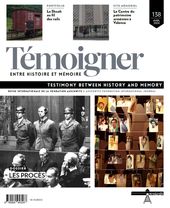
This dossier will deal with trials that have provided a legal answer to a demand for justice. Several cases will be addressed ranging from Istanbul and the Nuremberg Doctors' trial to the German policemen of the Brussels Jewish section and the gacaca trials in Rwanda.
Table of contents (Dutch version)
Table of contents (French version)No. 137 (10/2023) Children's Literature in Light of the Holocaust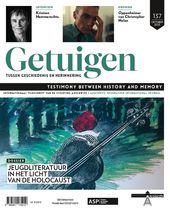
In France and Belgium, research into the relationship between children's literature and the Holocaust is rare, in contrast to the phenomenal attention in America (everyone knows Art Spiegelman's Maus) and in other English-speaking countries. Yet children's books depicting the Holocaust in words and pictures have been steadily gaining ground in post-war France and Belgium. While literary criticism and research still seem to be in their infancy, this dossier will show that critical analysis of this corpus is highly relevant for the future.
Table of contents (Dutch version)
Table of contents (French version)No. 136 (04/2023) The Executioners
The executioner has always fascinated and frightened. The perpetrators of mass crimes are those who carry out, facilitate or order the annihilation of a specific group. Issue 100 of Testimony: Between History and Memory, published in September 2008, examined the Nazi executioners. This dossier offers readers a historical and criminological approach to other genocides of the 20th century.
Table of contents (Dutch version)
Table of contents (French version)No. 135 (10/2022) Disobedience
This issue looks at the concept of disobedience in wartime. While the concept of civil disobedience may seem familiar in these times of endemic protest, there was a time when obedience was the rule. In a military context, disobedience was frequently followed by deadly consequences. This dossier focuses on three cases from the First World War and one from the Algerian War (1954-1962).
Table of contents (Dutch version)
Table of contents (French version)No. 134 (04/2022) The Killing of the ‘Useless’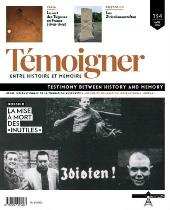
During the Second World War, the Nazi regime didn't just try to destroy the Jewish "race", which it considered dangerous. Before implementing the Final Solution, the Nazis massacred those who didn't fit in with their eugenic racial ideology and whom they considered inferior. In this dossier, we focus on the mentally and physically handicapped, systematic victims of Nazi pseudo-medical madness throughout the world conflict.
Table of contents (Dutch version)
Table of contents (French version)No. 133 (10/2021) 1918-1938: The politicisation of music in Europe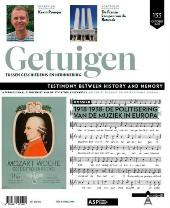
1918-1938: The politicisation of music in Europe
This dossier looks at the instrumentalisation of music by the political world between the wars. The cases are numerous and shed light on the way in which political propaganda was propagated in European musical culture.
Table of contents (Dutch version)
Table of contents (French version)No. 132 (04/2021) AKTION REINHARDT and AKTION ERNTEFEST
AKTION REINHARDT and AKTION ERNTEFEST
The Aktion Reinhardt saw approximately 1.8 million Polish Jews perish in the gas chambers of Bełżec, Sobibór, Treblinka and Majdanek between March 1942 and November 1943. The Jews who ‘escaped’ the gas chambers were shot in Majdanek, Trawniki and Poniatowa on 3 and 4 November 1943 during Aktion Erntefest. The dossier we are proposing takes stock of current research on the Aktion Reinhardt. This historical event has experienced a resurgence of interest among historians of the Shoah over the last fifteen years, thanks, among other things, to archaeological advances at the various sites concerned. We have come a long way since Yithzak Arad's pioneering work in 1987: Belzec, Sobibor, Treblinka: the Operation Reinhard Death Camps. The dossier highlights different perspectives to discuss current research related to the issue. It addresses the erasure of traces, the sociological perspectives of the executioners, the excavation of extermination sites and the most recent historiography.
Table of contents and abstracts (Dutch version)
Table of contents and abstracts (French version)No. 131 (10/2020) Historiography of the Second World War in the Far East
Historiography of the Second World War in the Far East
For many people, 8 May 1945 and the surrender of Nazi Germany is the final chapter of the Second World War. However, it is often forgotten that the months between May and September 1945 were decisive for the future of the world, as fierce fighting continued in the Pacific between the United States and the Japanese Empire until the latter’s unconditional surrender on 2 September 1945, the actual date of the end of the Second World War.Table of contents and abstracts (Dutch version)
Table of contents and abstracts (French version)No. 130 (04/2020) Reception of the Shoah and mentalities in Jewish and Christian circles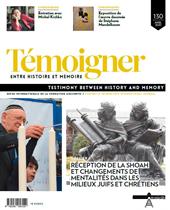
Reception of the Shoah and mentalities in Jewish and Christian circles
The reception of the Shoah has become, for all of humanity, a place of questioning and awareness. This dossier will aim to establish and evaluate the modalities and challenges of the transmission of the Shoah and to measure the resulting changes in identities and mentalities. What were the Catholic views on Judaism before and during the Shoah? What Jewish liturgies and interreligious rites exist for the commemoration of the Shoah in Israel and the United States? The evolution of mentalities in the Jewish world in relation to the Shoah will also be exposed through the analysis of the so-called Bitburg controversy, triggered by the visit of the American President, Ronald Reagan, to the German military cemetery of Bitburg (FRG) in May 1985. The Auschwitz Carmel affair (1985-1993) finally reveals the involvement of the Belgian and French Churches in the resolution of the conflict and is undoubtedly a key stage in the Church's 'teaching of esteem' with regard to the Jews. The historical answers provided in this dossier to the question of the Shoah may be decisive for the survival of Judaism and the relationship between Judaism and Christianity.
Table of contents and abstracts (Dutch version)
Table of contents and abstracts (French version)No. 129 (10/2019) Recognition of victims
Recognition of victims
In recent decades, the idea has gained ground that victims of mass crimes deserve recognition. This has become an essential category of our memorial culture. This dossier aims to take stock of this issue by looking at the broad spectrum of measures to ensure recognition, from simple remembrance to targeted judicial interventions, and by recalling the growing importance of the victim in international criminal justice. It returns to the problematic aspects of recognition when it leads to competition among victims.
Table of contents and abstracts (Dutch version)
Table of contents and abstracts (French version)No. 128 (04/2019) 25 years on, how to remember the Tutsi genocide
Kwibuka [Remember]. 25 years on, how to remember the Tutsi genocide
April 1994. Images of mutilated bodies are projected on European screens, originating from Rwanda. 25 years later, we remember.Table of contents and abstracts (Dutch version)
Table of contents and abstracts (French version)No. 127 (10/2018) Perpetuation of violence after 1918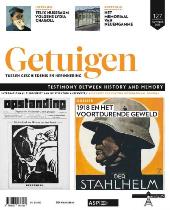
Perpetuation of violence after 1918
One hundred years ago, the First World War ended in November 1918. After four years of bloodshed, peace returns to Europe. At least, that was the impression of the victors at the time, and today it is also the impression of the commemorators who celebrate its centenary. The historical reality is more complex. At least until 1923, violence continued in the form of revolutions and counter-revolutions, wars and civil wars. The spirits also remain in the grip of violence on both the left and the right. The dossier proposes to define the contours of this Europe so strongly marked by the Great War, by evoking the culture of violence established by it and which, finally, degenerated into the total explosion of the Second World War.
No. 126 (04/2018) Questions about the future of remembrance work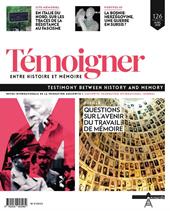
Questions about the future of remembrance work
On 20 and 21 January 2017, the seminar ‘Questions on the future of remembrance work’ was held in Esch-sur-Alzette, Grand Duchy of Luxembourg. The five articles in this dossier taken from the conference proceedings attempt to answer the following questions: How can we build a critical memory of the Shoah, free of myths and national fragmentation? How do we anticipate the absence of direct witnesses? In the future, who transmits what, and how?
No. 125 (10/2017) Persecution of homosexuals by the Nazis
Persecution of homosexuals by the Nazis
Historical knowledge of the Nazi persecution of homosexuals and their deportation has made significant progress in recent years due to the increase in research on the subject. In this dossier, recognised researchers as well as young doctoral and PhD students take the floor. The insights they provide concern both the question of the singular destiny of homosexual men and women during the Second World War and the way in which the memory of the homosexual victims of Nazism has evolved since the end of that war.
No. 124 (04/2017) Music in the camps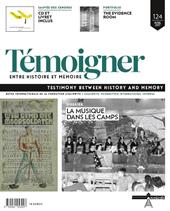
Music in the camps
Music was an integral part of the concentration camp world, Nazi and otherwise. What kind of music was composed and performed, and what exactly was its role in the camps? A factor of survival and resistance for the prisoners, a way for them to express their hope and their humanity - or, on the contrary, an instrument of oppression exploited by the executioners? What is the function of music in the work of memory following the experience of extreme violence and suffering? This dossier proposes to explore these issues.
No. 123 (10/2016) Translating Memory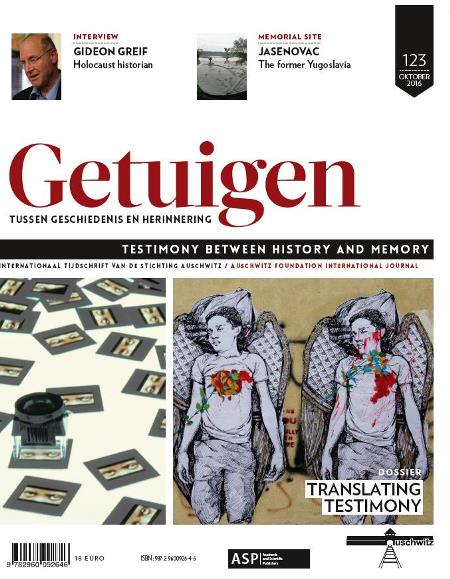
Translating Memory
Presentation of the dossier: What is the relationship between testimony, defined as a more or less ritualized firstperson account of political violence, and translation? Correspondingly, how does the translator position herself towards the witness? Can the translator be, or become, a witness? How, when and why are testimonies translated? Which linguistic and discursive strategies do translators resort to when faced with ethically challenging texts? Which role do they play exactly in the transmission of the historical knowledge, cultural values or social critique conveyed by the testimony? Does translation weaken or rather reinforce the relevance and impact of the original statement? How important is translation in literary, political and institutional settings? Do these specific settings determine translation practice in significant ways? To which extent can subsequent processes of transcription, editing, translation and archiving affect the source text? And how accurate are the boundaries we draw to distinguish witnessing from translating, documentary from literary testimony, the original from its translation? These are the main questions we intend to explore in our dossier.
No. 122 (04/2016) Revisionism and negationism
Revisionism and negationism
Strictly speaking, Holocaust denial is the ‘doctrine denying the reality of the Nazi genocide of the Jews, including the existence of the gas chambers’; by extension, the term refers to the denial of other genocides and crimes against humanity. The literature on Holocaust denial is extensive. There are studies on the subject in many countries as well as biographies of deniers. The argumentative and rhetorical strategies of the deniers have been widely deciphered. Websites systematically dismantle their fallacies. While there is no shortage of reliable information on the phenomenon, it is essential to return to it again and again, for several reasons.
No. 121 (10/2015) Extreme violence on stage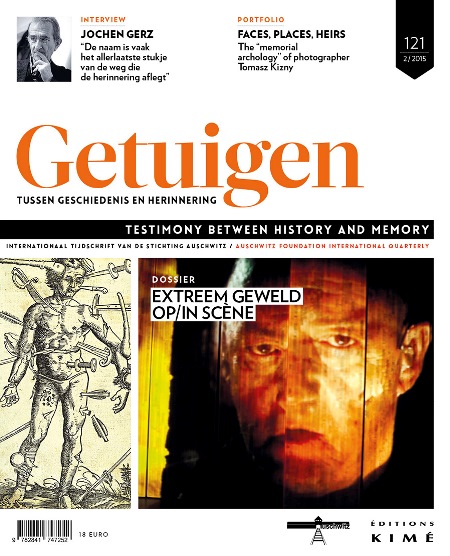
Extreme violence on stage
Extreme violence shows itself. It bursts through the screens. It surfs from one style and medium to another: news reports, documentaries, fiction, arts of all kinds. Yet theatre distinguishes itself from this mêlée all while constantly returning to the subject. Differently. Linked from its origins to the representation of cruelty and having “miraculously” escaped the often sterile polemics on the interdiction (or not)... of representing the Holocaust, it is still with the same youthfulness that theatre deals with extreme violence today, relentlessly pursuing the articulation of ethics and aesthetics.
No. 120 (04/2015) What future is there for the memory of the Armenian genocide?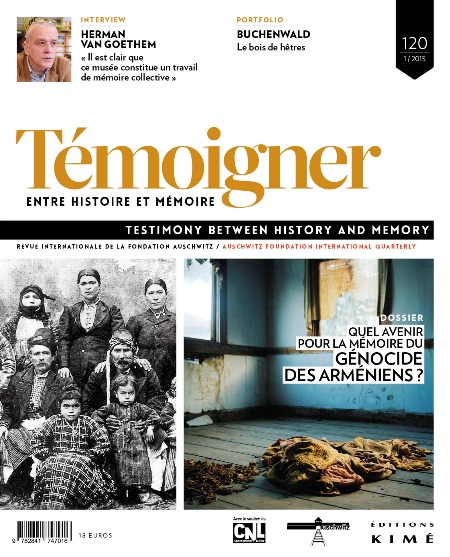
What future is there for the memory of the Armenian genocide?
The 1915 genocide of Turkish Armenians still stirs up numerous debates, controversies, declarations of principle, statements and counter-statements, and even negation. However, as we speak, ties are being established more and more openly, bridges are built and bonds strengthened between the Armenian and Turkish communities. Is reconciliation possible?
No. 119 (12/2014) 70 years ago, Auschwitz. Looking back on Primo Levi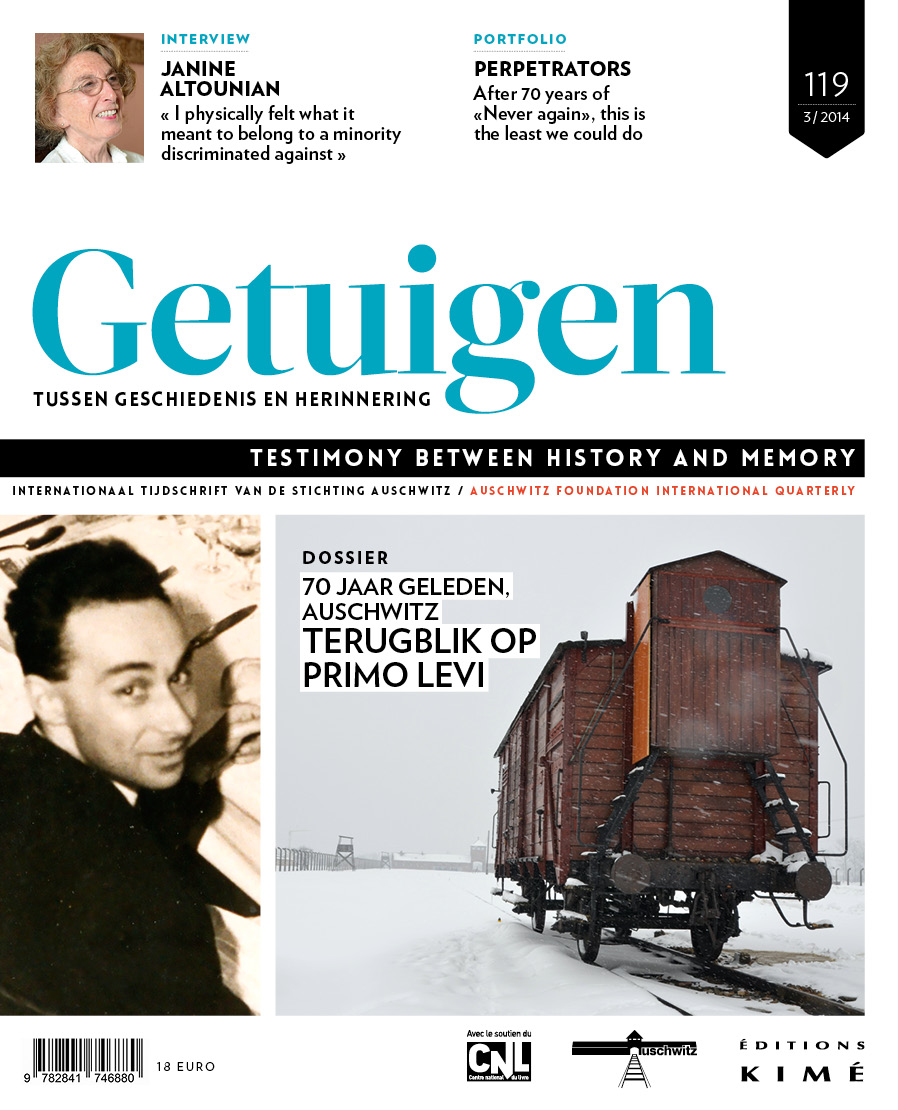
70 years ago, Auschwitz. Looking back on Primo Levi
27 January 1945. Seventy years ago the first soldiers of the Red Army marched into Auschwitz. One might argue that the camp was “liberated” then, but the truth is that neither Auschwitz, nor any of the other Nazi camps, was ever a priority to the Allied Powers. Primo Levi was one of the few survivors who knew how to hide and escape the enforced evacuation of the camps. With this dossier, we want to cast light on the complex figure that Levi was: a Jew, a deportee, a chemists, a witness, and a writer. It sets out to study his oeuvre and his interpretation of the notions of “resistance” and “engagement”, in order to understand how he eventually became a “professional survivor”, as he once described himself.
No. 118 (09/2014) Dictatorship and terror in Argentina, Chile and Uruguay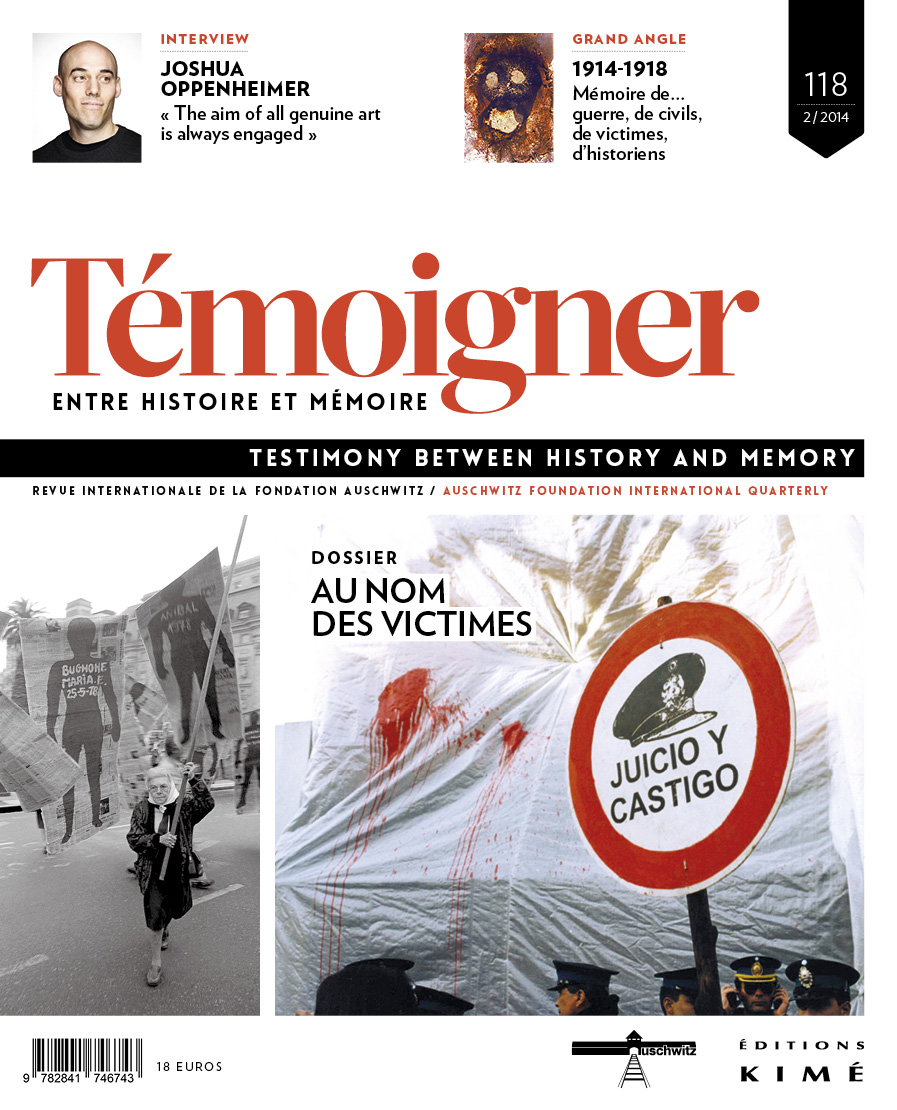
In the name of the victims. Dictatorship and State terror in Argentina, Chile and Uruguay
During the 1970s and 1980s, Argentina, Chile and Uruguay were in the grip of military dictatorships. The process of democratic transition that followed the long period of state terror involved the construction of particular narratives and memories, leading to a reconfiguration of the past. Despite local differences, this process is very much centered at the figure of the victim – a figure the articles in this dossier, collected by Claudia Feld, Luciana Messina and Nadia Tahir, set out to explore.
No. 117 (03/2014) Friends? Enemies? Relationships between memoriesAmis ? Ennemis ? Relations entre mémoires / Vriend of vijand? Hoe herinneringen zich tot elkaar verhouden [Friends? Enemies? Relationships between memories]
Much has been said and written about group memories, limiting their mutual relationships and history to conflicts, “wars”, competitions, or strategies for eclipsing or silencing. These terms have now become the platitudes of a kind of more general doxa about collective and cultural remembrance. This dossier proposes a critical reading of those terms and of that doxa by questioning the emergence, constitution, and inter-relating of different exemplary memories of the major violent episodes of the 20th century. It will address the relationships that those memories can maintain with other memories with which they share, if not the same event, at least similar characteristics and concerns.
No. 116 (09/2013) Memory tripsVoyages mémoriels / Herdenkingsreizen [Memory trips]
Should we fear what has been grouped under the term “memorial tourism”? Or should we take this as a reality of our time? Can any visitor, group or individual, nowadays be absorbed in the category of “tourist”? Or is this category a remote intellectual reduction of a personal experience that everyone is aiming during his visit? The problem appears in a somewhat different light when we think of tours for young people supervised by adults, usually teachers. This dossier gives the floor to historians and teachers with experience in the field.
No. 115 (03/2013) Memory construction in SpainL’Espagne en construction mémorielle / Spanje en de opbouw van de gedachtenis [Memory construction in Spain]
This dossier’s objective is to provide a benchmark for understanding the plural identities and relationships between memories and representation forms in contemporary Spain. Indeed, it is necessary today to take a fresh look not only on the stratified memories of the civil war, exile and the Franco repression, but also on the reception of other memories such as that of the Holocaust, and to propose new readings. We propose to highlight the conflicting or fruitful tensions between official actions, initiatives of associations and of artistic events.
No. 114 (12/2012) Memorial SitesSites mémoriels / Gedenkplaatsen [Memorial Sites]
Memorial sites constitute the concrete trace of European remembrance and history of the twentieth century. But what do they look like today? Exhibition and conservation criteria have changed during the last ten to fifteen years, like advances in historical research have changed the way we read and reconstruct past events. This is not only due to the fact that we have moved from a past history written by witnesses to a history written by professional historians. A new consciousness has emerged concerning transmission methods (memory education), and archeology has strengthened historical research. We tore off the veil of ideology that often influenced and prescribed the way we imagined permanent exhibitions, conservation and visits. Can we say we have entered a new era in memory transmission? It remains, in many ways, an open bet on the present and the future.
No. 113 (09/2012) The Taboos of German HistoryLes tabous de l'histoire allemande / De taboes van de Duitse geschiedenis The Taboos of German History]
The most painful or ambiguous periods in twentieth-century German history are characterized by numerous taboos, expressed in literature, photography and film as so many “returns of the repressed”. These studies focus in part on problems of antisemitism, and thus on the relationship of German-speaking societies to the Shoah. They also examine the way in which those societies confronted the violence they suffered, such as bombing, fleeing from the Red Army and the expulsions, and mass rapes.
No. 112 (06/2012) Children of the Spanish Civil WarLes enfants de la Guerre d'Espagne. Expériences et représentations culturelles / De kinderen van de Spaanse Burgeroorlog. Ervaringen en culturele voorstellingen [Children of the Spanish Civil War: Experiences and Cultural Representations]
The dossier in this issue deals with the experiences and cultural representations of childhood during the Spanish Civil War. It aims to help towards a better understanding of that conflict, which tore apart a population living on the same territory, by confronting the experiences of Spanish children who lived through it – as expressed in various forms during or after the war – with representations of those same children, particularly those coming from adults.
No. 111 (12/ 2011) Dangerous Game between Art and PropagandaArt & propagande : jeux inter-dits / Gevaarlijk spel tussen kunst en propaganda [Dangerous Game between Art and Propaganda]
Since the media came into existence, political institutions from political parties to governments have used them to promote their image, in order to win the support of the public they addressed. Authoritarian powers use the media as a means of consolidating their domination. But how can artists take part in propaganda, whose purposes are the opposite of those generally attributed to art? Does that mean setting aside their vocation, or do they themselves distort that vocation?
No. 110 (10/2011) Displacements, Deportations, ExileDéplacements, déportations, exils / Volksverhuizingen, deportaties, verbanningen [Displacements, Deportations, Exile]
States and criminal groups exploit population displacements to isolate or get rid of certain populations. In addition to being denied their normal rights, these populations lose visibility and are deprived of their reference points and social frameworks. In this way it is possible to make them the victims of constraints (deterritorialization, forced labor…) or violence (famine, massacres genocide…). These developments have spread on an unprecedented scale since the First World War and continue to grow worldwide. But there is also a dimension of remembrance to this reality: memories of these displacements are now being expressed in literature, and in exhibitions and museums. This dossier examines the contemporary double aspect of history and memory.
No. 109 (03/ 2011) 20th Century Wars and Genocides in Graphic Novels and Comic StripsLa bande dessinée dans l'orbe des guerres et des génocides du XXe siècle / Twintigste-eeuwse oorlogen en genociden in het stripverhaal [Twentieth Century Wars and Genocides as Portrayed in Graphic Novels and Comic Strips]
No. 108 (09/2010) How Documentaries Handle HistoryLe traitement de l'histoire dans les documentaires filmiques / De behandeling van de geschiedenis in de documentaire film [How Documentaries Handle History]
No. 104 (09/2009) Anti-fascism Revisited: History, Ideology, RemembranceL'Antifascisme revisité. Histoire – Idéologie – Mémoire / Nogmaals antifascisme. Geschiedenis, ideologie, gedachtenis [Anti-fascism Revisited: History, Ideology, Remembrance]
No. 103 (06/ 2009) Nazi Crimes and Genocides on the ScreenCrimes et génocides nazis à l'écran / Nazimisdaden en genociden op het scherm [Nazi Crimes and Genocides on the Screen]
No. 102 (03/ 2009) The Portrayal of Political Criminals in Films, Plays, Literature...Criminels politiques en représentation. Arts, cinéma, théâtre, littérature, médias / De representatie van politieke misdadigers. Kunst, film, theater, literatuur, media [The Portrayal of Political Criminals in Films and Plays, in Literature and in the Media]
No. 101 (12/2008) How to Educate, How to Remember?Quelle pédagogie, pour quelle(s) mémoire(s) ? / Welke pedagogie, voor welke herinnering(en)? [How to Educate, How to Remember?]
No. 100 (09/2008) Questions about the “Executioners”Questions de « bourreaux » / De kwestie van de “beul” [Questions about the “Executioners”]
Contact
Auschwitz Foundation – Remembrance of Auschwitz
Rue aux Laines 17 box 50 – B-1000 Brussels +32 (0)2 512 79 98
+32 (0)2 512 79 98 info@auschwitz.be
info@auschwitz.be
BCE/KBO Auschwitz Foundation: 0876787354
BCE/KBO Remembrance of Auschwitz: 0420667323
Office open from Monday to Friday 9:30am to 4:30pm.
Visit only by appointment.![]()
![]()
![]()
![]()
Become a member
To become a member of Remembrance of Auschwitz ASBL, take part in its activities and support its actions, please contact us.
Membership costs €40.00, payable to account n° 310-0780517-44 (IBAN : BE55 3100 7805 1744 – BIC : BBRUBEBB)
Donations of more than €40.00 qualify for a tax exemption for Belgian tax-payers.








































